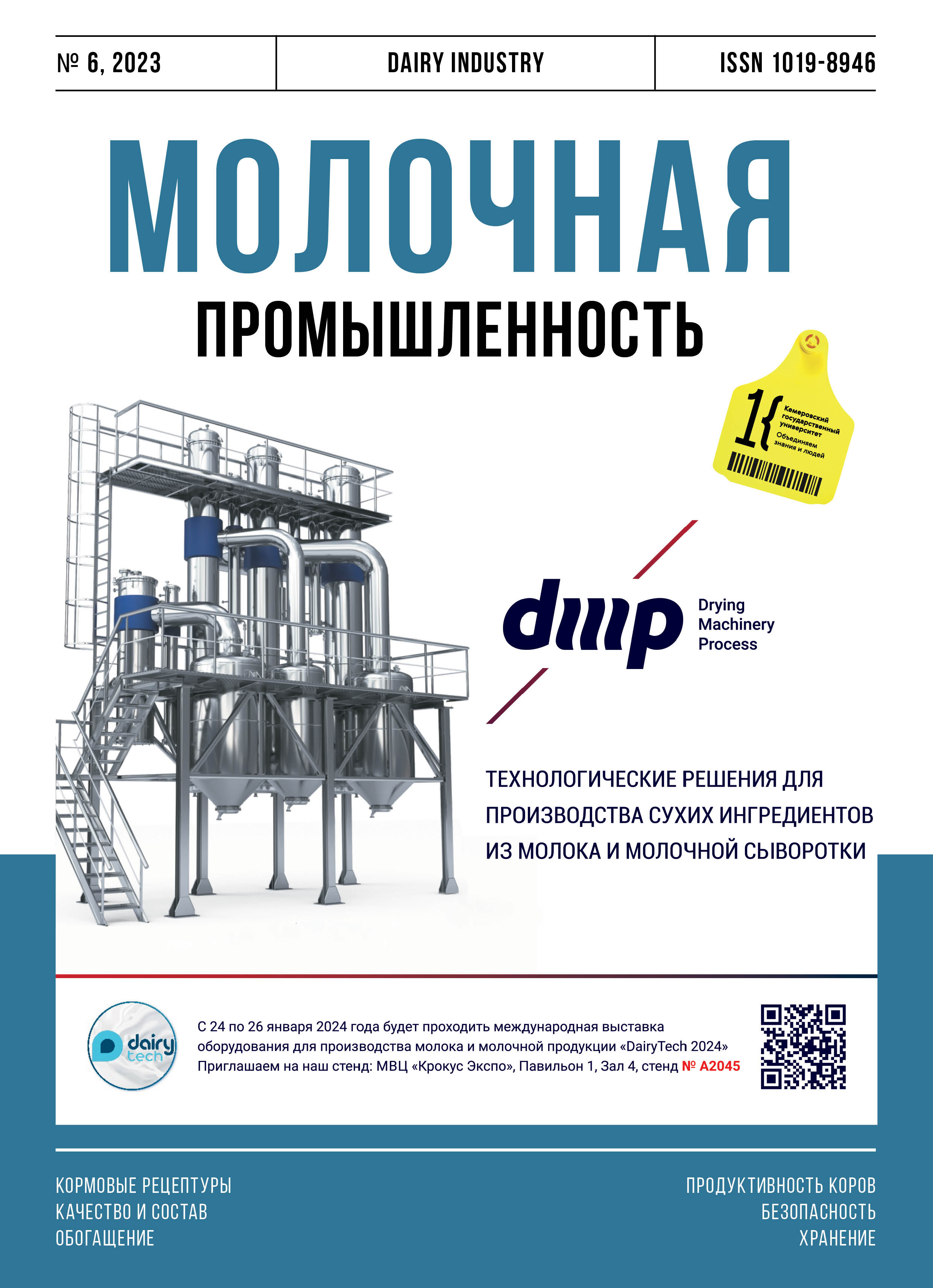Stavropol, Stavropol, Russian Federation
Stavropol, Russian Federation
Stavropol, Russian Federation
Stavropol, Russian Federation
Permeate of nanofiltration of dairy raw materials (NFP) in modern industry is not considered as a waste from which it is advisable to extract valuable components. Its use, for example, for washing equipment or restoring dry products is problematic due to the high residual content of dry substances. Due to these circumstances, the NFP has not yet had practical significance and has not been described in detail in the scientific literature. The composition and properties of NFP obtained on industrial equipment have been studied. Its main components are lactose and typical mineral vemilk, with the exception of calcium and magnesium, the content of which did not exceed 10 mg / kg. NFP purification was carried out by filtration through a reverse osmotic membrane. Water samples obtained after NFP purification at pressure were studied 20–55 bar and different concentration factors. The specific electrical conductivity of water varied in the range of 34–273 microns / cm depending on the pressure and degree of concentration. Calculation of the cost of reverse osmotic purification of NFP, taking into account the consumption of electricity, service and detergents, amortization of equipment and membrane elements showed that, at cost, the water obtained from the NFP is comparable to the reverse osmotic obtained by filtration of mains water, with the volumes of processing of the NFP more than 200 m3 / day.
membrane filtration, nanofiltration, reverse osmosis, wastewater, water treatment
1. Conlon, W. J. Pilot field test Data for prototype ultra low pressure reverse osmosis elements / W. J. Conlon// Desalination. 1985. Vol. 56. № C. P. 203-226.
2. Kelly, P. M. (National D. P. R. C. C. (Ireland)), Horton B. S., Burling H. Partial demineralization of whey by nanofiltration/ P. M. Kelly, B. S. Horton, H. Burling. 1992.
3. Kelly, J. Nanofiltration of whey: quality, environmental and economic aspects / J. Kelly, P. Kelly// Int J Dairy Technol. 1995. Vol. 48. № 1.
4. Van der Horst, H. C. Use of nanofiltration for concentration and demineralization in the dairy industry: Model for mass transport / H. C. Van der Horst [et al.]// J Memb Sci. 1995. Vol. 104. № 3. P. 205-218.
5. Nielsen, E. N. Improving electrodialysis separation efficiency of minerals from acid whey by nano-filtration pre-processing / E. N. Nielsen [et al.]//Int J Dairy Technol. 2022. Vol. 75. № 4. P. 820-830.
6. Simonič, M. Nanofiltration of the Remaining Whey after Kefir Grains» Cultivation// Membranes (Basel). 2022. Vol. 12. № 10.
7. McCarthy, W. P. Application of nanofiltration for the removal of chlorate from skim milk / W. P. McCarthy [et al.]// Int Dairy J. 2022. Vol. 128.
8. Dumpler, J. Milk ultrafiltrate analysis by ion chromatography and calcium activity for SMUF preparation for different scientific purposes and prediction of its supersaturation / J. Dumpler [et al.]// Int Dairy J. Elsevier Ltd, 2017. Vol. 68. P. 60-69.







